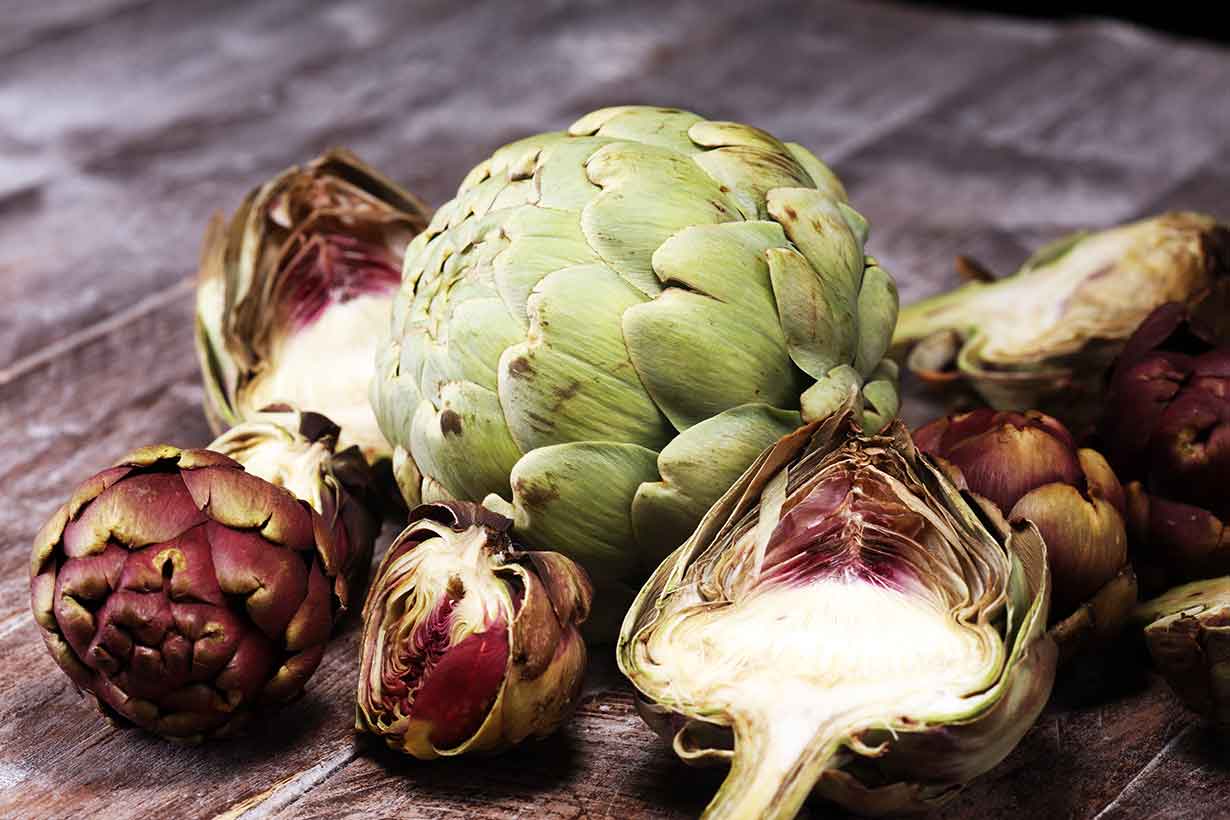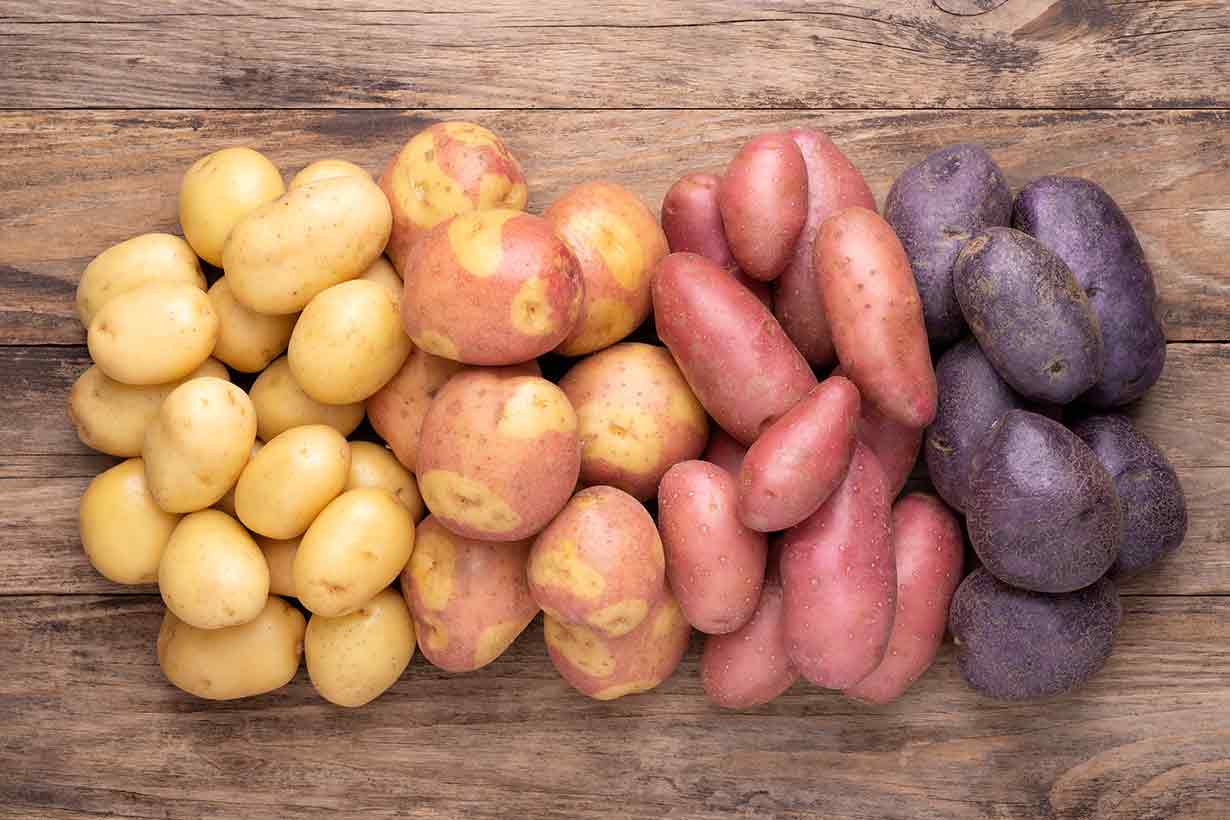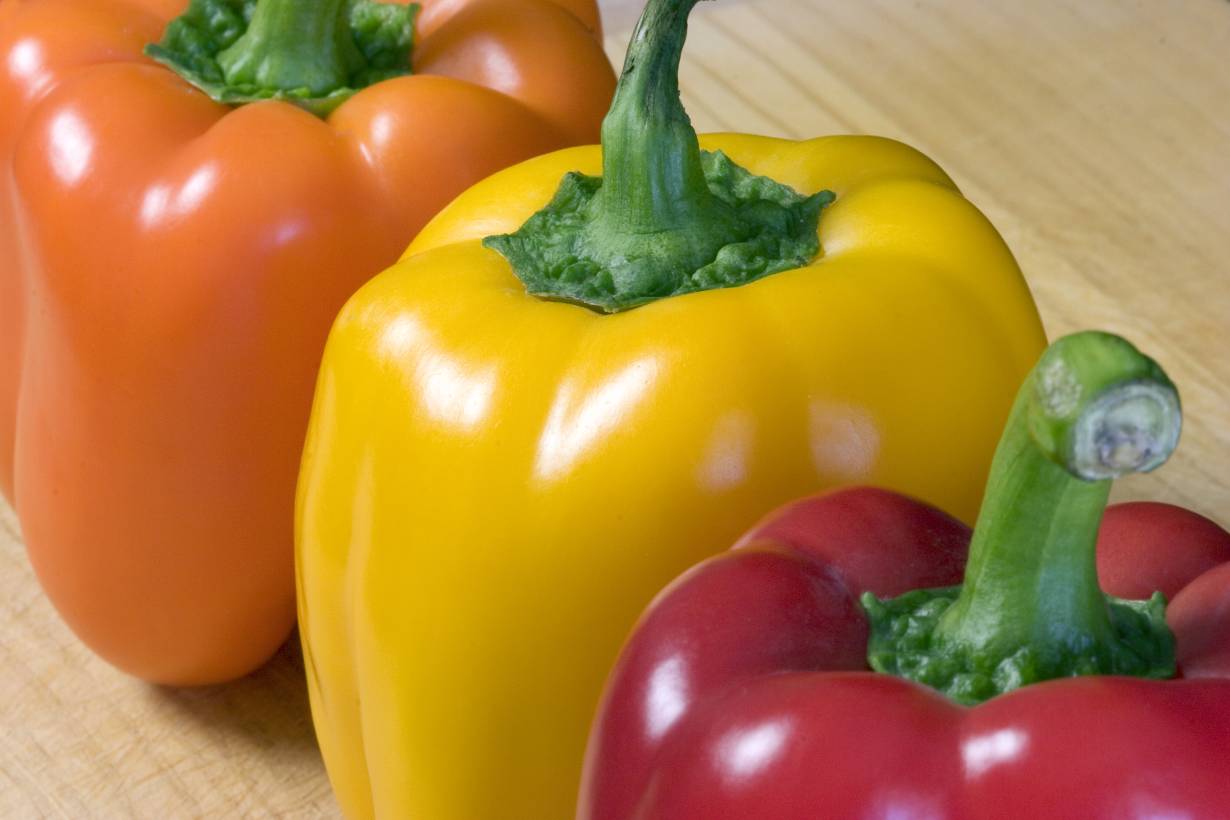Tomatoes add a hefty flavor to food, and they play a significant role in cuisines worldwide.
Perhaps surprisingly, tomatoes are botanically a fruit, and they are officially a type of berry.
However, we tend to use them as a vegetable in a culinary sense.
Tomatoes are thought to have several potential benefits, mainly due to their provision of micronutrients, fiber, and lycopene.
This article takes an in-depth look at their nutrition profile and potential benefits.
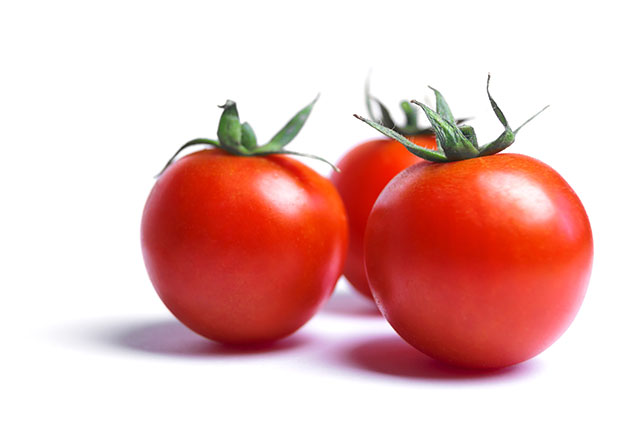
Nutrition Facts
The following section shows the nutrition facts for tomatoes per 100 grams. The data source is the USDA’s FoodData Central (1).
(For reference purposes, a typical tomato weighs approximately 91 grams, 123 grams, or 182 grams depending on whether it is small, medium, or large).
| Calories/Nutrient | Amount |
|---|---|
| Calories | 18 kcal |
| Carbohydrate | 3.9 g |
| Fiber | 1.2 g |
| Sugars | 2.6 g |
| Fat | 0.2 g |
| Saturated Fat | 0.03 g |
| Monounsaturated Fat | 0.03 g |
| Polyunsaturated Fat | 0.08 g |
| Protein | 0.9 g |
As shown in the nutritional values, tomatoes contain 3.9 grams of carbohydrates, and this is mainly from fiber and the sugars fructose and glucose.
They also contain minimal amounts of fat and protein.
Vitamins
Tomatoes offer a wide range of vitamins, but most of them are only in small to moderate concentrations (1):
- Vitamin C: 15.2 % DV
- Vitamin K1: 6.6 % DV
- Vitamin B6: 4.7 % DV
- Vitamin A: 4.6 % DV
- Folate: 3.8 % DV
- Niacin (B3): 3.7 % DV
- Vitamin E: 3.6 % DV
- Thiamin (B1): 3.3 % DV
- Riboflavin (B2): 1.5 % DV
- Choline: 1.2 % DV
As we can see, tomatoes are a good source of vitamin C.
Minerals
Despite containing almost every mineral, the amount of each mineral that tomatoes provide is relatively small (1):
- Copper: 6.7 % DV
- Potassium: 5.0 % DV
- Manganese: 4.8 % DV
- Magnesium: 2.6 % DV
- Phosphorus: 1.9 % DV
- Iron: 1.5 % DV
- Zinc: 1.5 % DV
- Calcium: 0.8 % DV
- Sodium: 0.2 % DV
Tomatoes Contain a Significant Amount of Lycopene
There has been a lot of scientific interest in lycopene.
Lycopene is a kind of carotenoid that has presumed antioxidant effects within the body and is responsible for tomatoes’ deep red color (2).
Per 100 grams, raw tomatoes offer approximately 2573 mcg of lycopene (1).
What Are the Benefits of Lycopene?
Recent scientific research on lycopene has indicated potential benefits related to inflammatory markers, UV resistance, and potentially protective effects against chronic disease.
Here are some recent findings from published research on lycopene:
- In a systematic review and meta-analysis of randomized controlled trials, lycopene supplementation appeared to reduce health markers of oxidative stress. However, the researchers noted that further research is necessary to confirm these potential benefits (3).
- A systematic review and meta-analysis examined the potential effects of lycopene on prostate cancer risk. Interestingly, both lycopene intake and circulating levels of blood lycopene were associated with a reduced risk of prostate cancer at statistically significant levels. Furthermore, in a dose-response analysis, every extra 2 mg of dietary lycopene reduced the risk of prostate cancer in a linear, dose-response manner (4).
- Another systematic analyzed the literature on the relationship between lycopene and metabolic syndrome. This review looked into observational studies and interventional trials and found that all studies noted a “significant protective effect” from higher lycopene intake (5).
- Researchers believe lycopene has potential UV-protective effects. In a trial that frequently exposed mice to UV-B light, the mice consuming large amounts of red tomato developed significantly fewer tumors than the control group (P=0.015). Furthermore, the mice that developed fewer tumors had higher concentrations of lycopene in their skin cells (6).
- Lycopene protected against UVB-induced damage in a randomized, double-blind controlled trial featuring 149 participants. In the study, 75 volunteers took a lycopene supplement (7.5 mg) daily for 12 weeks, while 74 participants received a placebo pill. After 12 weeks, the lycopene group had significantly lower levels of UV-induced photodamage (7).
- A systematic review and meta-analysis of 28 studies demonstrated that high intakes (and high blood levels) of lycopene are significantly associated with reduced risk of stroke, overall mortality, and cardiovascular disease (8).
Lycopene Content and Bioavailability In Tomatoes and Tomato Products
Lycopene is present in all tomato products. However, fresh and processed tomatoes have a few differences.
While processing can sometimes reduce the nutritional content of food, research suggests it is the other way around for lycopene.
Fresh vs. Processed Tomatoes
In a study, tomato paste offered much higher lycopene bioavailability than fresh tomatoes containing an equivalent amount of the compound (9).
Additionally, another study analyzed how tomatoes’ available lycopene content changed depending on cooking times of 15, 30, 45, and 60 minutes. This research showed that tomatoes’ lycopene (and overall carotenoid) content progressively rose with longer cooking times (10).
On this note, here is a guide to how raw and cooked vegetables can differ.
It is also worth noting that tomato paste offers a higher concentration of lycopene than fresh tomatoes. Since most research studies use between 7.5 mg and 15 mg doses of lycopene, this may be something to bear in mind for anyone eating tomatoes for their lycopene content.
According to the USDA FoodData Central database, fresh tomatoes provide approximately 2573 mcg (2.5 mg) of lycopene per 100 grams. Therefore, an equivalent dose to research studies would be around 300 to 600 grams (1).
In contrast, tomato paste provides 28764 mcg (28.7 mg) of lycopene per 100 grams and is more bioavailable too. A standard serving size of one tablespoon offers 4600 mcg (4.6 mg) (11).
Find out more about the benefits of tomato paste here.
Lycopene Stability and Cooking Temperature
Although cooking tomatoes can increase the amount of bioavailable lycopene, the compound can break down when it reaches certain temperatures.
On this note, a study investigating the effects of cooking conditions on lycopene content found that the carotenoid degrades faster at temperatures above 100°C (212°F) (12).
Using data from this study, the table below shows the degradation of lycopene in tomatoes at different temperatures.
| Cooking Condition | Lycopene Degradation Rate |
|---|---|
| 100°C (212°F) | 50% degradation after 1-hour cooking |
| 125°C (257°F) | 50% degradation after 20 minutes cooking |
| 150°C (302°F) | 50% degradation after 10 minutes cooking |
As shown in the table, lower heat levels appear to preserve higher concentrations of lycopene.
According to the study, baking and microwave cooking preserved much more lycopene than frying.
Lycopene is Fat-Soluble
Lycopene is a fat-soluble nutrient.
In other words, consuming a source of fat alongside tomatoes is optimal for the highest absorption of lycopene. This fat content could be some meat or fish that is part of the meal, plant-based fats such as avocado, or added fats such as butter or olive oil.
For instance, in one study, consumption of a tomato-containing salad without fat showed no measurable increase of lycopene in the body. On the other hand, the same salad consumed with avocado led to a 4.4-fold increase in lycopene levels (13).
Lastly, it is worth noting that other red fruits and vegetables, such as bell peppers and specific varieties of carrots, and watermelon are also good sources of lycopene.
However, processed tomato products such as tomato passata, tomato paste, and tomato soup offer the highest lycopene concentrations.
Tomatoes Are Easy To Use
Another positive point about tomatoes is their versatility and just how easy to use they are.
We can easily see this by looking at how prevalent tomatoes are in recipes worldwide.
From salads, sandwiches, pizzas, and spaghetti dishes to English breakfast, juice, fast food, and even cocktails, tomato products are incredibly versatile.
Throwing some tomatoes into a salad or stir-fry or adding some tomato paste to a stew are all simple ways to improve food’s nutrient value (and taste).
Concerns and Drawbacks
On the whole, tomatoes are fairly nutritious, and they offer more positives than negatives.
However, here are some potential drawbacks to be aware of.
Allergy and Sensitivities
There are rare reports of tomato allergy, and this reaction appears to result from several allergenic proteins found within tomatoes (14).
Also, cross-reactivity exists between tomato and pollen allergies. Research has established this is due to the similarity between the structures of the Sola l 4 protein in tomatoes and an allergen in birch pollen called Bet v 1 (15).
Based on a small trial, 9% of 32 patients with pollen allergy had cross-reactions with tomatoes (16).
Little is known about the true prevalence of tomato allergy, but in patients with existing food allergies living in the Mediterranean, 6.5% of the population had sensitivities to tomatoes (17).
Ultra-Processed Products
The majority of tomato products are reasonably nutritious.
That said, it is worth noting that some types of tomato-based sauces and marinades can contain substantial amounts of added sugar and oils.
For anyone looking for tomato products without the extra sugar and oils (and calories), make sure to check the ingredients label.
Types of Tomatoes
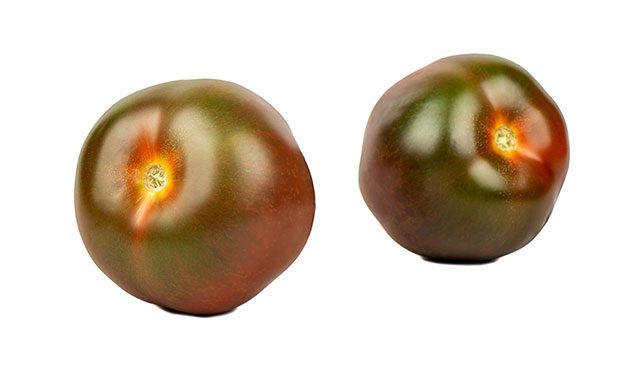
Tomatoes are not just one thing; like other fruit, there are dozens of varieties of tomatoes worldwide.
If you visit a farmers’ market, you can probably find some unique breeds you’ve not yet seen.
Here are some of the most common varieties of tomatoes around the world:
- Beefsteak
- Campari
- Cherry
- Grape
- Kumato
- Roma
Beefsteak Tomatoes
Beefsteak tomatoes are the most commonly available tomato and have significant commercial value. For instance, fast food chains frequently use these tomatoes in their products.
These tomatoes are quite sweet and can grow to several pounds (1 kg +) in weight.
Campari Tomatoes
People often confuse Campari tomatoes with cherry tomatoes.
In terms of size and appearance, Campari tomatoes are somewhere in between cherry tomatoes and plum tomatoes.
Campari tomatoes are widely thought to be one of the sweetest—and most flavorful—commercial varieties of tomato (18).
Kumato
Kumatoes are a similar size to regular red tomatoes.
However, they have an off-green to reddish-brown color, and they contain higher amounts of fructose than regular tomatoes (19).
As a result, the Kumato has a slightly sweeter taste than the standard red tomato.
Cherry Tomatoes
Cherry tomatoes are small and round, and they resemble a grape in size.
Salads often use cherry tomatoes as they provide a crunchier, juicier taste than regular tomatoes.
Although they may look like a new tomato variety, cherry tomatoes have been around for centuries.
Perhaps surprisingly, they were the first tomato grown in Europe.
Cherry tomatoes have similar nutritional content to standard tomatoes.
Grape Tomatoes
Grape tomatoes are similar in size to cherry tomatoes. However, they have more of an oblong shape rather than being round.
Roma Tomatoes
Roma tomatoes are one of the most popular commercial tomato varieties, and they share a similar appearance to grape tomatoes.
This variety is known as ‘Italian tomatoes,’ but they grow across continents.
Commercial production occurs in Australia, the United Kingdom, and the United States (20).
Roma tomatoes have an oblong shape and share a similar appearance to grape tomatoes.
Final Thoughts
Overall, tomatoes have a lot to offer, and they come in all different shapes and sizes.
Nutritionally, they are among the best dietary sources of lycopene, and they provide a respectable amount of vitamin C.
There is also an excellent reason why tomatoes are so popular worldwide: they enhance the taste of the many dishes we use them in.


